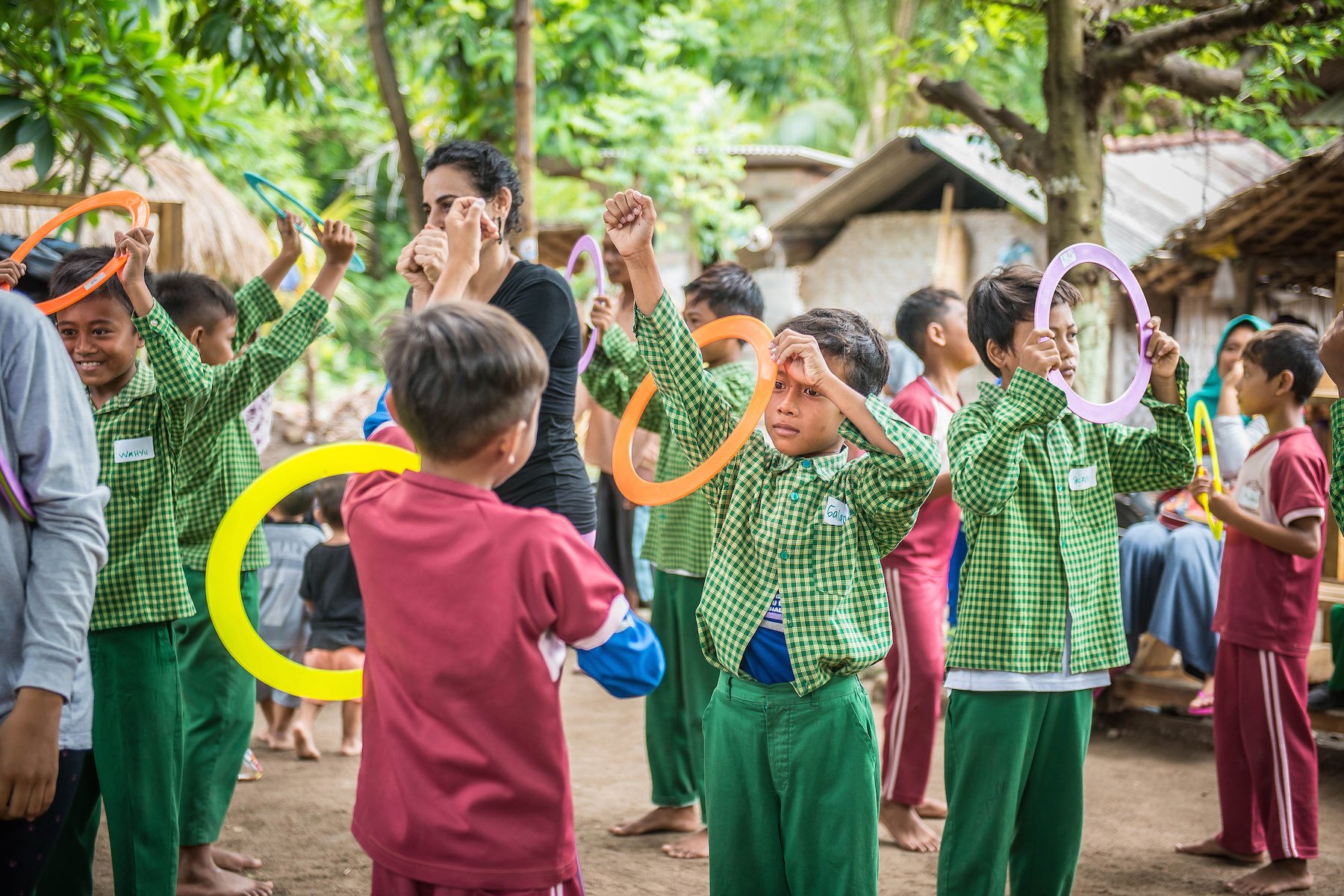Learning Objectives
Upon completion of 2-day Live or Hybrid/Blended Distance Learning Training, participants will be able to:
1. Summarize the historical context of circus and how it relates to social participation and health equity from an occupational therapy perspective.
2. Define and explain social development and how it relates to the intersection of social circus and occupational therapy interventions.
3. Demonstrate circus being delivered through occupational therapy-informed models of practice.
4. Develop evidence-informed circus interventions for differences in sensory-motor abilities, visual perception, gross and fine motor control, and executive function.
5. Discuss circus-themed occupational therapy theory and practice, including task grading, client-centered care, assessment, goal setting, intervention and evaluation tools.
6. Debate the similarities and differences between social circus and occupational therapy-informed circus.
7. Design traditional occupational therapy evidence-based practices with circus skills instruction to increase social, emotional, physical, and cognitive capacities.
8. Discuss causes and effects of occupational deprivation in current political contexts and how circus delivered through an occupational therapy lens has addressed this issue for communities of displaced people.
9. Explain the complexity of trauma informed interventions as related to political and environmental refugee communities.
10. Practice individual and group-focused instruction methods.
11. Restate emotional, physical and cultural safety protocols.
12. Appraise a variety of adapted theater, movement and circus skills and be able to explain how instruction techniques are used to address specific functional capacities.
13. Develop processes involved in working cross-culturally including; logistics, setting up partnerships, accountability, collaborative goal setting between stakeholders, fundraising and team cohesion.
14. Plan, deliver and evaluate circus interventions through case study examples for pediatrics, aged care, mental health and refugee/displaced.
*Learners will receive 1.3 CEUs for full attendance and for successfully completing all related activities and assessments that represent the learning objectives associated with each section, in addition to post-evaluations.
Upon completion of the 1-day Live Training, participants will be able to:
1. Summarize the historical context of circus and how it relates to social participation and health equity from an occupational therapy perspective.
2. Define and explain social development and how it relates to the intersection of social circus and occupational therapy interventions.
3. Practice individual and group-focused instruction methods.
4. Design traditional occupational therapy evidence-based practices with circus skills instruction to increase social, emotional, physical, and cognitive capacities.
5. Appraise a variety of adapted theater, movement and circus skills and be able to explain how instruction techniques are used to address specific functional capacities.
6. Plan, deliver, and evaluate circus interventions through case study examples for pediatrics, aged care, mental health, and refugee/displaced populations.
*Learners will receive 6.5 CEUs for full attendance and for successfully completing all related activities and assessments that represent the learning objectives associated with each section, in addition to post-evaluations.
Upon completion of the Distance Learning-Interactive Training participants will be able to:
1. Summarize the historical context of circus and how it relates to social participation and health equity from an occupational therapy perspective.
2. Define and explain social development and how it relates to the intersection of social circus and occupational therapy interventions.
3. Practice individual and group-focused instruction methods.
4. Design traditional occupational therapy evidence-based practices with circus skills instruction to increase social, emotional, physical, and cognitive capacities.
5. Appraise a variety of adapted theater, movement, and circus skills and be able to explain how instruction techniques are used to address specific functional capacities.
6. Plan, deliver, and evaluate circus interventions through case study examples for pediatrics, aged care, mental health, and refugee/displaced populations.
*Learners will receive .6 CEUs for full attendance and for successfully completing all related activities and assessments that represent the learning objectives associated with each section, in addition to post-evaluations.
Upon completion of the Distance Learning-Independent Training, participants will be able to:
1. Classify the historical context of circus and how it relates to social participation and health equity from an occupational therapy perspective.
2. Differentiate social development and how it relates to the intersection of social circus and occupational therapy interventions.
3. Categorize individual and group-focused instruction methods.
4. Plan traditional occupational therapy evidence-based practices with circus skills instruction to increase social, emotional, physical, and cognitive capacities.
5. Interpret a variety of adapted theater, movement, and circus skills and be able to predict how instruction techniques are used to address specific functional capacities.
6. Plan, relate, and justify circus interventions through case study examples for pediatrics, aged care, mental health, and refugee/displaced populations.
*Learners will receive .7 CEUs (7 hours) for full attendance of webinars and for successfully completing all related activities and assessments that represent the learning objectives associated with each section, in addition to post-evaluations.
Curriculum Timeline:
Day 1 - Lecture and Experiential Learning
• Introductions. Background. Research Populations. Political and Environmental Refugees.
• What is Circus? Circus history and evolution into a social development tool.
• What is OT?
• Object manipulation stations, juggling, hula hooping, diabolo, poi swinging, plate spinning, flower sticks.
• Circus Through an OT Lens: Autoethnographic research and experiences of circus and OT from 2005-present.
• Life Skills. Warm up games, ice breakers, physical theater and group circus activities.
• Physical, Social, Emotional and Cognitive Capacities
Day 2 - Lecture and Experiential Learning
• Evidence-Based Practice.
• Team-building and collective goal setting
• Social Enterprise Practice ModelsLogistics, partnerships & stakeholders
• Improv. Ice Breakers. Warm up
• Applying the OT process Assessment, Intervention and Evaluation.
• Games, Skills and Application.
• Common Themes. Common OT themes, sensory processing, motor control, executive function, autism, mental health, emotional health, social skills and community health.
• Case Study Scenarios.
• Q and A
• Next Steps.




